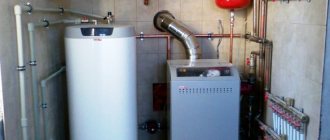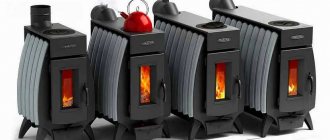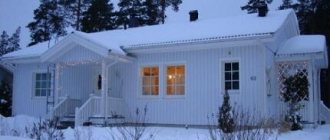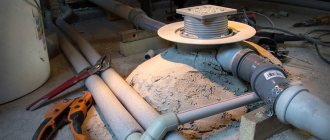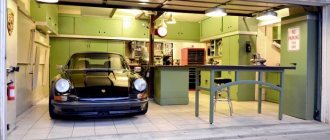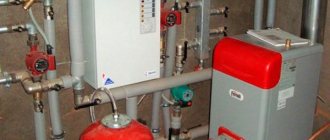Heating costs in private homes are a serious problem in our country. However, in order to reduce annual home heating costs, we need not only appropriate boilers, but also high-quality fuel, proper heating control, and often thermal insulation of the building. In addition, often the cheapest heating option is not always efficient in terms of fuel consumption and equipment maintenance.
Which type of economical heating should I choose for my new home? And why in existing buildings a boiler replacement - to get really good results - should usually be part of a heating system upgrade or even a building retrofit. Answers to these questions will be given in the following text.
Solar collectors
Unlike solar panels, collectors are designed to heat water.
There are two forms of solar collectors - flat and tubular. The most efficient models of these devices can process up to 85% of the energy received from sunlight - and this is a fairly high figure. However, collectors also have a number of disadvantages. First of all, it is worth noting that solar collectors can only work during the daytime. In addition, even during the day, the efficiency of the device can vary depending on external conditions - cloudy weather significantly reduces the efficiency of the collector.
Savings when using these devices are achieved through solar energy - it is absolutely free, i.e. direct heating costs are zero. If we look at this issue from this angle, we can make the erroneous conclusion that solar collectors are the most profitable heating system possible. During a long sunny day, a collector battery with an area of 60 m2 produces up to 240 kW/h per day. Even a small collector under suitable weather conditions can significantly increase heating efficiency.
The main condition for economy
And it is probably necessary to start with that condition, without which all further presentation simply loses all meaning. That is, without which any heating system obviously cannot be classified to any degree of efficiency.
We are, of course, talking about maximally blocking the paths for heat leakage from the house. Or – about a well-thought-out, calculated and correctly executed thermal insulation system for a building.
In nature, everything strives for harmony and balance. And if a heated object suddenly appears against the general “cold background”, no matter what, then heat exchange processes are activated, trying to quickly level out the difference in temperature and bring it to one general level. This also applies to any home - without an insulation system, the temperature inside will tend to drop to the street temperature, and the only barrier to this will be the building envelope. Which, by the way, in most cases do not have the most outstanding resistance to this heat transfer. In a word, heat will actively go outside - for this there are several “traditional” directions. And the volume of heat leaks (heat loss) will depend on the location and features of the structure, its contact area with the external environment, the material of manufacture and the presence of thermal insulation qualities.
This is not all, but the main ways of heat loss in a residential building.
1 - Heat loss through the ceiling of the first floor, foundation, basement, basement. These leaks, by the way, are not so large against the general background - partly due to the fact that heat still tends to rise. So, this part of the house accounts for 10 to 15% of the total heat loss.
2 - The external walls of the building, due to their large area, become one of the main routes for heat leakage. They account for up to a third (up to 35%) of losses.
3 - Windows and doors are a special issue, since much depends on their type, quality of manufacture and installation, and operating mode (how often they are opened). But in total we can talk about losses of 15÷25%.
4 - A very problematic place is always the attic floor or roof (depending on the specifics of the building). They are natural barriers to the upward flow of heat, and with insufficient thermal insulation, losses here reach 20–25% of the total volume, and sometimes even more.
5 - Literally, the “highway” for heat release (up to 30÷40%!) can be the ventilation system (and without it, there’s no way) and chimneys (if there are any). Here, of course, the problem is solved not by thermal insulation, but somewhat differently - by air recovery, proper operation of furnace devices or structures, the presence of a valve system, etc. But forgetting about this is unacceptable!
Why does the author place such emphasis on all this? The reason is obvious - there is no point in talking about energy savings if heat leakage paths are ignored.
There are special methods for calculating heat losses, taking into account the specifics of the building and the climatic conditions of the region of residence. And the design of a heating system is precisely based on these calculations, which show how much heat this system must replace.
Moreover, modern electronic equipment allows one to personally recognize vulnerabilities in thermal insulation. It is enough to inspect the building from the outside in winter using a thermal imager - “holes” are immediately detected, through which the heat quickly escapes to the street.
Thermal imaging examination helps to find gaps in thermal insulation - it is clearly noticeable that heat literally radiates through such areas into the street.
Leaving it as it is is literally trying to “heat the street” with a obviously predictable result. And in this case, the choice of heating system does not matter much, since a priori it will be extremely uneconomical and unprofitable, regardless of the energy source used - even if the energy carrier is practically free.
That is, only then, after completely eliminating or, where this is not possible, minimizing heat losses, will it be justified to search for the most economical home heating system for your conditions. It is for such equal conditions that we will consider options.
By the way, in general terms, but with a fairly high degree of accuracy, the algorithm proposed on the pages of our portal allows us to calculate the predicted amount of heat losses for individual rooms and for the entire house (apartment) as a whole. Essentially, this gives the calculated thermal output of the heating system. And since this calculation, by its structure, takes into account the most unfavorable conditions (which, if they occur during the winter, do so infrequently and not for long), the resulting values of thermal power can be considered guaranteed to be sufficient to replenish heat losses.
If you want to more thoroughly evaluate your future heating system, we recommend that you follow the link and first calculate the required power of the system. It will be mentioned more than once below.
Is it possible to independently calculate the power of the heating system for your home?
Yes, this is possible - and with quite acceptable accuracy of the final result. Go to the publication on our portal dedicated to heating boilers - in the appendix there is a brief description of the algorithm and a convenient online calculator with the necessary explanations.
By the way, based on the power indicators obtained as a result of these calculations, the final heating devices are selected for specific rooms. For example, in the future you can select the desired radiator model, calculate the number of sections for dismountable batteries, the length of the “warm floor” circuits, etc. So it is best to save the compiled table with the values of thermal power for each of the heated rooms - the owners will need it more than once.
* * * * * * *
Now - directly to the topic of our publication. And the next question will be the cost-effectiveness of using various energy sources. To “bring it to a common denominator”, priority will be given to heating systems with liquid coolant, as the most popular and widespread. That is, when we talk about, say, solid fuel, we do not mean ordinary direct heating stoves, but boiler equipment that serves the entire house. It’s the same with electricity – not individual heating devices placed in rooms, but an entire heating system with a central heat generator powered by electricity.
Below will be presented a table of a kind of “rating” of efficiency - in the opinion of the author of these lines. Let no one be misled by the total scores - these are completely arbitrary evaluation criteria. That is, they do not actually show the level of efficiency - here, in addition to the cost of energy, they include issues of creating a heating system, delivery and storage of fuel, ease of use, safety and others. Buttons in each row of the table will immediately take the reader to a more detailed consideration of the advantages and disadvantages of a particular energy carrier.
Perhaps some issues seem controversial - I will be glad to receive comments in the comments to the article.
Simple heating of a country house: without gas or electricity
Heating your home with electricity is expensive and unreliable. Using gas is cheaper, but it is not always possible to connect it. Then you have to look for other options.
There are several modern alternative sources: energy from the sun, underground resources or an ice-free reservoir. But their installation is quite expensive and complicated. Therefore, a traditional option such as stove heating is often chosen for a dacha.
Pechnoe
It has been known for quite a long time, but remains relevant to this day. There are many variations of stoves. They can heat the entire house or a single room. Sometimes they are connected to a water heating system. Ovens not only heat, but also cook food.
Fuel burns in the combustion chamber. It heats the walls of the stove, which release heat into the house. The following materials are used:
- brick;
- cast iron;
- stainless steel.
The brick takes a long time to heat up, but it also takes longer to release heat. To maintain a comfortable temperature at the dacha, 1-2 heatings per day are required. Steel furnaces heat up quickly and cool down just as quickly. Cast iron ones also heat up quickly, and in terms of heat transfer they occupy an intermediate place between other varieties.
The following is used as fuel:
- firewood;
- coal;
- pallets;
- fuel briquettes.
Advantages and disadvantages
The advantages of heating a dacha with a stove include:
- Autonomy. There is no dependence on gas and electricity.
- Suitable for houses where people do not live permanently.
- You can also cook in the oven.
There are the following disadvantages:
- Requires space to store fuel.
- Brick stoves are quite massive, and it is advisable to lay them together with the house.
- Less heating efficiency.
- If the water circuit is not connected, the rooms far from the stove will be cooler.
- It is necessary to make a chimney.
The cheaper way to heat a house in Ukraine
Due to the increase in the price of firewood in 2021, the overall picture of the cost of heating in Ukraine looks very interesting. The layout is reflected in a similar calculation table:
Note. Electricity tariffs are indicated based on 2 conditions: the home has electric heating according to all the rules and energy consumption does not exceed 3000 kW/h per month.
The first place in terms of cheapness of heating in Ukraine is still occupied by dry firewood and electricity used at night. But due to the rise in price, their cost has practically become equal to the price of natural gas, which has fallen in price by 5...10% (in the current conditions it is not easy to announce the exact figure?).
Please also take into account this point: the 2021 table shows average fuel prices. Pellets and briquettes of poorer quality can be bought cheaper, and electricity and gas cost the same everywhere. So, energy resources are arranged in the following order (from cheap to expensive):
- electricity at night tariff;
- main gas;
- dried firewood;
- pellets, sawdust briquettes;
- freshly cut wood;
- used oil;
- anthracite coal;
- electricity at a daily rate (for consumption up to 3600 kW/month);
- liquefied gas;
- diesel fuel.
It is impossible to predict the size of gas and electricity tariffs in Ukraine due to the unstable economic situation. It is unlikely that energy resources will become significantly cheaper; subsidy payments are decreasing annually.
On the issue of supplying main gas, Ukrainians are in the same position as Russians, whose houses are not connected to gas pipelines due to the high cost of the service. Both have to burn different types of solid fuel or use electricity at night.
Reducing heat loss
In order to obtain the most efficient and profitable heating system, it is necessary to take a more responsible approach to the issue of reducing heat loss. Let's remember what an ordinary person does if he freezes. He brews hot tea and takes out a warm sweater and wool socks from the closet. That is, it is insulated as much as possible. It turns out that a person does not allow his natural warmth to come out.
The same should be done with the house. It is necessary to reduce heat loss as much as possible, and for this you will have to use an integrated approach - that is, insulate the house both outside and inside. The main thing is that you can do it yourself, without the help of specialists and additional financial costs.
Methods
It is possible to increase the heat transfer resistance of structures. To begin with, those that are more profitable to insulate. For example, if the walls of a building are initially warm, then it is cheaper to increase the thickness of the insulation material on the roof and floor, and also choose more energy-efficient windows.
Each specific project may have its own solutions:
- you can use “warm” windows, which will be protected from the outside by roller shutters;
- you can install a modern automatic ventilation system with a certain amount of air and heat recovery;
- You can use heat recovery from sewage effluent.
Increased efficiency
To increase the efficiency of heating your home, you can introduce a variety of modern technologies that reduce fuel consumption into your heating system. There are a huge number of methods alone for laying pipelines from the boiler to the radiators. There are heating equipment of different designs and all kinds of additional equipment that can significantly increase the efficiency of the entire system by 10–15% or even more. But you need to carefully weigh the pros and cons.
Choosing the cheapest fuel
In order to correctly choose the most economical heating in a private home, it is recommended that you familiarize yourself with the commercially available heating devices and the characteristics of the energy sources used. In this case, it is necessary to take into account such factors as the geographical location of the building, its configuration and the prospect of rising fuel prices.
Electric boilers
Combination boilers are installed in rural areas, where it is possible to buy firewood cheaply.
The price of electricity is constantly rising, and no downward trends are observed.
However, economical electric boilers have the following advantages:
- compactness;
- safety;
- reliability;
- durability;
- autonomy;
- ability to configure operating parameters;
- high performance;
- ease of installation;
- no need to obtain permission for installation.
Electric heating of a house is an economical method only if the house is located in a rural area where reduced tariffs apply, or its owner has benefits and subsidies.
Connection to the gas pipeline
If there is a gas pipeline in the area, it is profitable to install a gas-wood boiler.
Gas remains the most inexpensive source of energy, but also tends to constantly rise in price. It is recommended to connect to it if the gas pipe runs close to the country house.
The following factors speak in favor of this decision:
- wide range of equipment;
- high performance;
- noiselessness;
- security ensured by automation;
- Availability of offline mode.
The disadvantages should also be taken into account. To install the boiler, you must obtain a permit; installation can only be carried out by specialists. In addition, large initial investments are required.
Liquid fuel boiler equipment
Waste oil is a cheap type of fuel for liquid fuel boilers.
Equipment of this type is rarely installed in the private sector. More often it can be seen at industrial sites.
To heat a house, diesel fuel, fuel oil and waste oil are used if there is no alternative.
The devices have the following advantages:
- good heat dissipation;
- ease of installation;
- versatility in raw materials for application.
There are some difficulties in operating liquid fuel stoves. They include the need for constant refueling and ensuring safe storage of fuel reserves.
Wood or coal stove
Coal boilers are cheaper in regions where this type of fuel is produced.
The rise in prices for electricity and gas has forced many property owners to turn their attention to traditional energy sources - firewood and coal. However, the rise in prices for raw materials, their production and transportation has not spared these resources.
Advantages of the equipment:
- affordable price;
- reliability;
- ease of operation;
- possibility of independent fuel production;
- good heat dissipation.
To be able to efficiently heat a building throughout the entire cold period, you need to create a fairly large reserve. It is also necessary to constantly add coal and firewood to the boiler, including at night. And this is not the best use of time for building owners.
Wood-burning pellet boiler
Long-burning pyrolysis boiler with an efficiency of 92%
The optimal solution to save on heating is to install a long-burning stove. It is a device where air enters the combustion chamber from above. As a result, the fuel in the firebox smolders rather than burns.
System advantages:
- long burning, which in the best models lasts up to 2 days;
- high efficiency, reaching up to 92%;
- quick payback;
- compactness;
- multifunctionality;
- efficiency.
Hydrolysis boilers operating on pallets and briquettes have virtually no disadvantages. They are difficult to make with your own hands and require careful selection of the installation location, since the body gets very hot.
The most economical way to heat a house is a universal stove that runs on all types of fuel, including waste, which can be collected in unlimited quantities at any landfill. The oven is made from a steel pipe with walls at least 6 mm thick. The firebox is equipped with cast iron grates that can withstand the combustion temperature of coal. The boiler is capable of burning plastic, wood, fabric and even liquid fuel, which is used to soak rags or foam rubber.
Heating system "Leningradka"
This heating system is very popular due to its relatively simple installation, not too high price and the ability to regulate the air temperature in each individual room.
Single-pipe circuit with sequential installation of radiators on the circuit. Pipe routing can be horizontal or vertical. From the boiler, the coolant enters the network and returns to the heating boiler. You can install as many radiators in your house as needed to heat a particular room.
pros
- The ability to set the desired temperature in each room without completely disconnecting from the heating system.
- If there is a need to repair one heating device, you can turn it off, while the rest of the system continues to operate.
- Radiators heat up quickly and evenly.
- Small diameter pipes are used for installation, which saves money.
Minuses
- Installing a pump ensures the full functioning of the system, but requires financial expenses, incl. to pay for electricity.
- When there is a power outage, the system does not work because the pump stops.
Which gas boiler is better to choose?
This section is intended to tie all previous discussions to real life, because theory and practice are different things. Theoretically, everything is correct; the most economical gas boiler with the highest efficiency is a condensing boiler. But having learned how much this miracle of technology costs, not everyone will dare to buy it. And is there such a need?
Take the same gravity system, which does not require pumps, automation and electricity. It is not advisable to buy an expensive heat source for it, although a turbocharged or condensing heat generator will cope well with such a system. It will simply force the coolant to circulate forcibly from its own pump. The question is the reliability of power supply and the decent price of equipment, which will pay off when it is unknown.
It is also not very reasonable to buy a condensing boiler for a small house of 100 square meters. m of area with any heating system. In such an area, you are unlikely to feel the efficiency compared to an inexpensive aspirated engine. You can see a real difference if a country cottage with an area of over 300 square meters. First, heat it with a simple boiler, and then change it to a condensing boiler.
Economical heating systems for a country house using insulation
If you properly insulate a building, you can spend less money on heating your home. That is, before choosing the type of heating for the cottage, you need to insulate it.
Insulation can be done both during construction and in an already constructed building. If the thermal insulation is excellent, then you will turn on the heating system less often, it will last longer, and fuel consumption will decrease.
To compare, an insulated private house consumes 50 kW of electricity, and an ordinary building 100 kW. The difference is significant. And no matter what type of heating system you use, reducing heating consumption will save you money.
Boilers 100-150 sq. m
1
Protherm Slope RAY 14 KE /14 14 kW single-circuit
Rating:5.0
- Thermal power: 7 – 14 kW
- Mains voltage: three-phase
- Power levels: 2
- Maximum current 3F: 25 A
- Coolant temperature: 25 – 85 °C
- Functions: autodiagnostics, frost protection, power-on indication, overheating protection, thermometer, pressure gauge
Average price: RUB 50,882
A wall-mounted electric boiler is used for heating and organizing hot water supply when a boiler is connected. Users can configure up to four power levels. It is possible to connect a remote control and a weather-dependent automation unit. Thanks to the LED indication and liquid crystal display, it is convenient to monitor the temperature and control the operating status of all components.
Peculiarities:
- automatic protection against overvoltage, freezing, water hammer;
- built-in expansion tank and pump unit with float air vent;
The efficiency of this unit is 99.5%. This is a convenient and economical boiler option for installation in an apartment, private house or country house.
2
Vaillant eloBLOCK VE 14 14 kW single-circuit
Rating:4.9
- Thermal power: 7 – 14 kW
- Mains voltage: three-phase
- Power levels: 2
- Maximum current 3F: 25 A
- Coolant temperature: 25 – 85 °C
- Functions: autodiagnostics, frost protection, pump blocking protection, power-on indication, overheating protection, thermometer, pressure gauge
Average price: RUB 56,304
The electric boiler from the German brand is equipped with rich energy-saving functionality. The microprocessor control unit provides automatic temperature control, protection against overloads in the electrical network, freezing of the boiler and boiler. Power supply is supplied from a three-phase alternating current network with a voltage of 380V.
Peculiarities:
- possibility of connecting an indirect heating water heater;
- compatibility with Warm Floors systems;
- effective pump anti-blocking system;
- presence of a BUS bus for connecting weather-compensated automation.
The boiler has a modern design. Despite the powerful electronic filling, it has the simplest possible control panel and can be an excellent alternative to gas heating.
3
EVAN S2 12 12 kW single-circuit
Rating:4.8
- Thermal power: 12 kW
- Mains voltage: three-phase
- Heated area: 120 sq.m
- Efficiency: 99%
- Coolant temperature: 30 – 85 °C
- Functions: power-on indication, overheat protection
Average price: RUB 22,440
The boiler with Czech electric heaters made of stainless steel is famous for its durability and easy operation. The coolant temperature is controlled by a thermostat and is smoothly adjusted in the range of +30℃…+85℃. Precisely maintaining the desired room temperature using an external thermostat allows you to save electricity. When using an additional remote control module, you can control the operation of the unit from a distance.
Peculiarities:
- the design of the heating element on a threaded connection simplifies the replacement procedure;
- The emergency sensor turns off the unit at a temperature of +92±3℃.
Unlike the previous model, this device does not have a circulation pump, but there is a block for connecting it. The unit performs its functions at a pressure in the circuit within the range of 0.12 - 0.15 MPa.
4
EVAN Next 12
Rating: 4.6
- power: 6 – 12 kW
- heating area: – 120 sq.m
- number of circuits (if any): single-circuit
- Efficiency: – 99%
Average price: 12,350 rub.
EVAN Next 12 is a single-circuit boiler with a heating element. The power of the heating system is from 6 to 12 kW. Heats up to 120 square meters. Efficiency is high - 99%. Mechanically controlled. The boiler is installed on the wall. There are two power levels. Three-phase mains voltage. The product is protected from overheating. Weighs 8 kg. The manufacturer promises 10 years of operation.
Advantages:
- low noise level;
- compactness;
- low price;
- Ease of Management.
Characteristics of the most popular heating systems
The choice of a specific type of heating is not limited to connection to the central line or autonomous operation; they are divided into several options that are suitable in a given situation.
Water heating
Many consumers choose water heating for a country house, the options and prices of which make it possible to provide the building with heat and hot water with minimal starting investments and an acceptable level of operating costs.
It is a closed loop system that consists of three main components:
- Heating boiler
, which can operate on suitable gas, liquid or solid fuel and electricity.
- Labor systemsb
, which ensures the delivery of coolant (heated water) to each room.
- Heating batteries
, acting as heat sources in the room.
To ensure high-quality functions, constant circulation of water in the pipes is necessary; it can be forced or natural.
Schematic representation of a water heating systemSource oventilyacii.ru
The first option requires connecting a pump of sufficient power, which will ensure the movement of the coolant in the utilities. The second is obtained due to changes in the density and degree of heating of water in different parts of the heating system; the heated coolant moves upward, squeezing out colder water.
Despite the advantages, there are disadvantages:
- Uneven heating – rooms located closer to the boiler heat up more than those further away.
- The temperature rise rate is quite slow and you will need to wait for the entire house to warm up.
- Impact on the interior. If pipes are laid in the walls at the construction stage, then to repair them it will be necessary to remove the coverings. If water heating is installed after renovation, it is difficult to fit it naturally into the design of the room.
- The need to maintain a certain coolant temperature increases operating costs.
Despite this, water heating is the most popular.
Electric heating of a country house (electric convectors)
If we take into account only efficiency, then electricity has the highest indicator among all heating elements, therefore it is more often chosen than others when it is possible to connect to a common energy main.
Electric heating radiatorSource termonet.ru
The advantages of this type of heating include:
- Relative ease of installation, which, if you have basic knowledge and skills, can be done independently.
- High rate of room heating.
- No noise accompanying the operation of devices.
- A wide selection of devices based on various operating principles, which allows you to use the most optimal option for yourself.
- A large range of different design solutions makes it possible to choose an electric heating device for a specific interior.
But there are a number of conditions that limit or make it impossible to use such equipment in some cases:
- High cost per 1 kW of heat.
- There are certain wiring requirements. It must be designed for the appropriate power.
- An uninterrupted supply of electricity is required. If there are problems with this in the region, then you should look for another option.
If these parameters are observed, installing electric heating will only bring benefits.
Traditional boilers vs condensing boilers
Each of the two types - condensing and convection devices - uses different technologies for heating. A classic boiler (convection) burns fuel. It subsequently heats the heat exchanger with circulating water. There is quite a lot of energy left that the device cannot use. And it is removed through the chimney. Therefore, the efficiency of such devices does not exceed 90%.
Condensing technology works differently. The design provides for the presence of two chambers. In the first, gas is burned, in the second, the resulting excess energy is condensed on a heat exchanger. Thanks to condensation, the temperature of the heated water that is supplied to the system increases.
On the one hand, condensing models have high efficiency, thereby saving resources and money for the owner. On the other hand, one must take into account the high cost of such equipment.
To withstand chemically active condensate, equipment must be made of durable and high-quality materials. This increases the price of it. In addition, it will be necessary to install additional devices that will neutralize the condensate. After all, it cannot simply be poured into the public sewer.
Condensing boilers work best in combination with heated floors. In this case, the water temperature usually heats up to an average of 35 degrees.
If only radiators are used for heating, a temperature of at least 50 degrees is needed. But the process in this case will not be so effective, because the heated water upon contact with the heat exchanger will not release as much condensate. And the efficiency will not be high enough.
Methods for economical heating of a private home
The amount of energy required to replace lost heat depends on four factors:
- location of the house (in colder regions the consumption is higher);
- size of the building;
- home energy efficiency;
- energy efficiency of the heating system.
The first factor is the main one, but it does not depend on you. The colder the weather outside, the more energy is required to maintain a comfortable temperature inside.
The size of the house is also important. A spacious room contains a significant volume of air that needs to be heated. Therefore, a large house requires high heating costs.
A great opportunity to save energy and money is to improve the energy efficiency of your home and its heating system. There are several ways to do this:
- choose the optimal type of heating system;
- improve façade insulation;
- repair the heat distribution system (air ducts and pipes);
- Eliminate heat leaks through doors, windows and various cracks.
Description and principle of operation of electric heating boilers
Gas boilers are popular due to the low cost of fuel, but it is not always possible to connect them due to the labor-intensive procedure and the need for coordination with government agencies. Energy sources for solid fuel units are even cheaper, but there are many more disadvantages - they pollute, require the removal of combustion products, fuel loading, and storage space.
The listed disadvantages are absent in electric boilers, which are sometimes the only option for heating if there is no possibility of supplying gas. Moreover, electrical devices are considered not only as additional or emergency sources, but also as the main devices for the preparation of coolant. With them you don’t have to worry about ignition and other inconvenient issues associated with fuel combustion.
The most economical electric boiler should be chosen from energy-saving induction and electrode models. But we must take into account that in any case, its operation will cost approximately 2.5 times more than gas units, at best 1.5 times. Economy is considered here for situations where there are no other alternatives to electricity or if this type of energy is cheap (there are alternative sources - solar collectors, etc.).
Heating a country house with liquefied gas
If there is no gas main nearby, you can heat the house with liquefied gas (a mixture of propane and butane). It's not much more expensive. Gas has no expiration date. The main problem is the supply and storage of fuel. Cylinders are used to heat small houses; for cottages with a significant living area (for example, for two-story houses made of foam blocks), an underground storage tank (gas holder) is installed. The heating system is connected to it.
Heating cylinders have a volume of 30-50 liters. The gas container is installed outside, in a special cabinet near the wall of the house. The pipe connecting the cylinder to the boiler should not have threaded connections or sharp corners.
Rules for using gas cylinders:
- It is prohibited to gasify basements and basements
- It is necessary to provide free access to the tank from all sides
- Do not expose the gas container to heat or direct sunlight.
- It is not allowed to operate tanks with damaged housings or corrosion.
- The distance from the cylinder to the boiler must be at least 1 m
For a continuous supply of fuel, it is best to install several cylinders. They are connected through a special ramp that has a flexible connection, a gas pressure measurement sensor and a safety valve. If the cylinder heats up, the valve releases excess gas, thereby reducing the pressure inside the cylinder.
Gas boilers operating on natural and liquefied gas have no fundamental differences. The only thing is that when connecting a cylinder, due to the high calorific value of liquefied gas, it is necessary to install a nozzle of a smaller diameter.
Any houses for permanent residence, whether made of foam blocks or frame houses. need a heating system. The comfort of living depends on how well the heating system and other utilities are implemented.
Even if you do not plan to build a house for permanent residence, but only for seasonal residence, you still need a toilet, for example, a peat one. And for this, in turn, a cesspool is needed. Read about the process of constructing a peat toilet for your dacha in this article. about the construction of a cesspool - here.
Finally. Installation of gas heating is best left to specialists. Unprofessional installation of equipment is fraught with more than just breakdowns. The health and lives of users are put at risk. A properly installed system is convenient, safe, and economical, because the homeowner can independently regulate the temperature of radiators and hot water.
Boilers for houses up to 60 sq. m.
1
Teplodom i-TRM SILVER StS 6 6 kW single-circuit
Rating:5.0
- Thermal power: 6 kW
- Mains voltage: single-phase/three-phase
- Power levels: 3
- Heated area: 60 sq.m
- Coolant temperature: 5 – 80 °C
- Functions: auto-diagnostics, frost protection, pump blocking protection
Average price: RUB 20,300
The electric boiler with microprocessor control has an intuitive user interface and provides adjustment of the coolant temperature within the range of +5℃ ... +80℃. The smart system ensures alternating operation of the heating elements in order to ensure their uniform depreciation. Seven-voltage switches open and close the network silently, so there will be no clicks characteristic of relay ECUs.
When connecting an external water meter with a pulse output, the boiler will turn off without operator intervention if the flow in the heating circuit stops for some reason.
Peculiarities:
- durable heating element made of stainless steel;
- the ability to participate in a cascade connection paired with other boilers;
- presence of an input for an external thermostat and weather-compensating automation;
- maintaining operability at extreme voltage values.
With a 3-phase connection, the boiler has another advantage - it automatically selects the priority phase to even out the load on the electrical network.
2
EVAN EPO 6 6 kW single-circuit
Rating:4.9
- Thermal power: 6 kW
- Mains voltage: single phase
- Efficiency: 99%
- Heated area: 60 sq.m
- Coolant temperature: 30 – 85 °C
- Functions: power-on indication, overheat protection
Average price: RUB 12,550
An inexpensive electric heating boiler can be integrated into a heating system with natural circulation or a built-in pump. Tap water or antifreeze can be used as a coolant. The temperature in the range of +30℃…+85℃ is smoothly regulated using a built-in thermostat.
Peculiarities:
- electric heater made of high-quality stainless steel;
- emergency thermal switch that turns off the boiler when the coolant temperature reaches 92;
- possibility of connecting an external thermostat;
Unlike the previous model, EVAN EPO 6 does not have such rich functionality, but the price of the unit is much lower.
3
Teplodom iTRM-6 SILVER 6 kW single-circuit
Rating:4.8
- Thermal power: 6 kW
- Mains voltage: single-phase/three-phase
- Heated area: 60 sq.m
- Maximum current 3F: 16 A
- Coolant temperature: 30 – 80 °C
- Functions: autodiagnostics, frost protection, power-on indication, overheating protection, thermometer
Average price: RUB 13,900
The Teplodom electric boiler is equipped with a rich set of useful functions, and has a huge price advantage among similar models. The triac electronics used in this unit operate silently and are resistant to surge voltage surges. Steel heating elements have a special chemical coating that extends their service life. The frost protection system, emergency shutdown and self-diagnosis allow the device to remain operational for a long time.
Peculiarities:
- presence of an input for weather-compensating automation;
- advanced digital, LED and sound indication;
- intelligent power modulation with phase selection.
This electric boiler is suitable for a private home or cottage as a main or backup heat source. The boiler can be connected to 220 V or 380 V electrical networks.
Gas heating
Gas heating is an ideal option in a country house. Round-the-clock warmth in the house at minimal cost - what else is needed. This type has a significant number of advantages:
- acceptable price;
- the ability to select the optimal boiler power depending on the heated area;
- the presence of a thermostat that allows you to control the heat level;
- high equipment reliability;
- long service life of the equipment;
- there is no need to regularly monitor and clean the equipment.
There were also some downsides:
- permitting documentation is required due to the high danger;
- regular inspection of equipment by specialists is necessary;
- Since carbon dioxide is released, ventilation is needed.
Of course, gas heating in a country house is possible if a main gas pipeline is connected. Unfortunately, the level of gasification in Russia is still at a negligible level. When it comes to the impracticality of building a highway or remote areas, you can forget about gas.
There is an option to install an autonomous gas holder, that is, a gas storage tank. In this case, all the advantages of gas heating are preserved, and the complete independence of the owner of a country house is added.
But the gas tank requires increased care and compliance with safety rules. For example, it is prohibited to fill a container with gas more than 85%. To this must be added regular inspections and considerable costs for installing and filling the cylinder.
general information
In the absence of gas supply, owners use other economical methods of heating their houses. Several alternatives are used. They differ radically in the organization of the system and in cost.
When choosing an economical method of heating a house, you need to rely on the following criteria:
- climate;
- maximum sub-zero temperature;
- budget.
Based on these parameters, a suitable economical option for providing heat in the house is selected. There are many effective heating methods. Here's some brief information about each of them.
Heat pumps
Heat pumps require electricity to operate, but even so, they are a very economical option for heating a private home.
It's all about the principle of operation of such a device, which looks like this:
- The compressor compresses freon, which is in a gaseous state. Increasing pressure converts freon into liquid and causes heating.
- The heat generated by freon remains in the heat exchanger and is used to heat the building.
- At a certain moment, the refrigerant reaches the expansion valve, and in this area it cools, and very sharply - the temperature of the freon instantly drops by several tens of degrees.
- Entering the external heat exchanger, freon is heated by the environment.
- The heated gas is again compressed in the compressor, and the working cycle is repeated.
The outside temperature should be lower than the air temperature in the house. Freon must be even colder when passing through the heat exchanger.
The heat source for a heat pump can be:
- Street air (air heat pumps can operate at ambient temperatures down to -25 degrees);
- Soil (the soil temperature at a level below the freezing depth is always above zero, which makes it possible to connect a heat exchanger to it);
- Water (the source of heat can be either an ice-free reservoir or groundwater).
Economical heating of a private home in the case of heat pumps is possible due to the fact that each kilowatt of compressors consumed allows several times more energy to be pumped into the heating system. Such savings put heat pumps on the same level as wood boilers - and there is no inconvenience during operation, since the heat pump operates autonomously without any problems.
The savings compared to more conventional devices range from 3 to 6 times and vary depending on two parameters:
- Temperature of the external heat exchanger, which directly affects the possibility of heat intake;
- The temperature of the internal heat exchanger, the increase of which leads to a decrease in the heat transfer of the pump.
Electric boilers
A popular economical heating method. The system is simple and safe. During operation, no soot or gas appears, and there are no harmful emissions into the environment.
Features of this economical heating method:
- It is necessary to carefully and thoroughly think through and organize heating to ensure minimal energy consumption. Errors and failures will result in costs.
- The model and category of the boiler matters. In most cases, equipment with heating elements is used, which is inexpensive, but consumes a large amount of electricity. It is better to buy induction boilers. Here the bulk of the energy is spent on initial heating. After this, electricity consumption decreases.
Regardless of the type of boiler purchased, the owner receives a compact, easy-to-install device. There is no need to install a chimney. But a separate room is allocated to house the heating system, since electric boilers make noise during operation.
The use of electric boilers is an inexpensive and easy-to-install solution, an additional economical heating method. But, if the electricity supply is periodically cut off in the village, you should not use this option. There is a risk of being left in the cold without heating.
The best oil-efficient heaters
Inside the metal body of oil radiators there is mineral oil, which is the main coolant. When heated, it transfers heat to the body, thereby increasing the ambient temperature. The advantage of devices in this category is their low cost and minimal energy consumption. The oil retains heat for a long time, so continuous operation of the heater is not required to maintain the optimal temperature.
3 Resanta OMM-7N
In third place is the budget model OMM-7N from the RESANTA brand. The heater is very popular among buyers due to its low cost and high quality.
The power of the device is 700 W. The radiator has 7 sections and is designed for heating small rooms up to 7 m2. The device is made of white steel, has an attractive appearance and compact dimensions (37 x 43 x 13 cm). Due to its small dimensions, the radiator can easily be stored in a closet during the warm season; it will not take up much space. There is a special compartment for the cord, which makes storage more convenient. The model is ideal for small apartments and offices. Although the case is not equipped with rollers, it has a special handle with which the radiator can be easily moved.
The heater has an adjustable thermostat that allows you to set the required temperature. Control is carried out by a mechanical switch. There is an operation indicator light. When a critical temperature is reached, overheating protection is triggered and the device automatically turns off.
Pros:
- Price.
- Compact.
- Built-in thermostat.
- Heats up quickly.
- Automatic shutdown when overheated.
- Has a special compartment for the cord.
Minuses:
- There are no rollers to move.
RESANTA OMM-7N
2 Ballu Comfort BOH/CM-05
Another budget option for an oil cooler, Ballu Comfort BOH/CM-05, takes second place in our rating.
The model is made in white, has a stylish modern design and has a thoughtful design. The special shape of the “High Stability” legs absolutely eliminates accidental tipping, which makes the device safer, and the caster wheels ensure its mobility. Like the previous version, there is a special compartment for storing the cord. The radiator consists of only 5 sections, its overall dimensions are 60 x 25 x 25 cm. The body has an anti-corrosion “Protective coating”, which protects the device from negative environmental influences and extends its service life.
The maximum power of the model is 1000 W. It is suitable for heating rooms up to 15 m2. There are 3 heating modes: 400 W, 600 W and 1000 W, which are easily set using a mechanical regulator. The heater is equipped with a high-precision “Opti-Heat” thermostat. It automatically maintains the set temperature. The level of energy consumption is low - no more than 1 kW/hour.
Pros:
- Price.
- High precision thermostat.
- 3 operating modes.
- Anti-corrosion coating.
- Special design of legs with rollers.
- Automatic shutdown when overheated.
- Has a special compartment for the cord.
Ballu Comfort BOH/CM-05
1 Electrolux EOH/M-5105N
The best among economical oil heaters was Electrolux EOH/M-5105N.
A spectacular and stylish model in black and white colors immediately attracts attention. The device has a thin ergonomic body consisting of 5 sections. The radiator is easy to move between rooms thanks to legs with wheels and a convenient handle recessed into the body. There is a compartment on the side for hidden cord storage. Due to its compact dimensions (25 x 62 x 24 cm), the device can be comfortably placed even in small rooms, and you can put it away in a closet for the summer season.
The device is equipped with a reliable mechanical thermostat. The maximum power is 1000 W. The model is suitable for maintaining heat in rooms up to 15 m2. The choice of power and temperature is carried out using the intuitive control system “Easy manage”. There are 3 modes: 400 W, 600 W and 1000 W.
Automatic shutdown functions in case of fall and overheating make the unit as safe as possible. Inside, the radiator is filled with environmentally friendly oil that meets European quality standards. And the unique “MAX time heat” technology allows you to use the device in continuous operation for more than 45 days!
Pros:
- Stylish design.
- Compact sizes.
- Highly reliable thermostat.
- 3 operating modes.
- Automatic shutdown when overheated or dropped.
- Has a special compartment for the cord.
- Environmentally friendly oil.
- “MAX time heat” technology.
Electrolux EOH/M-5105N

